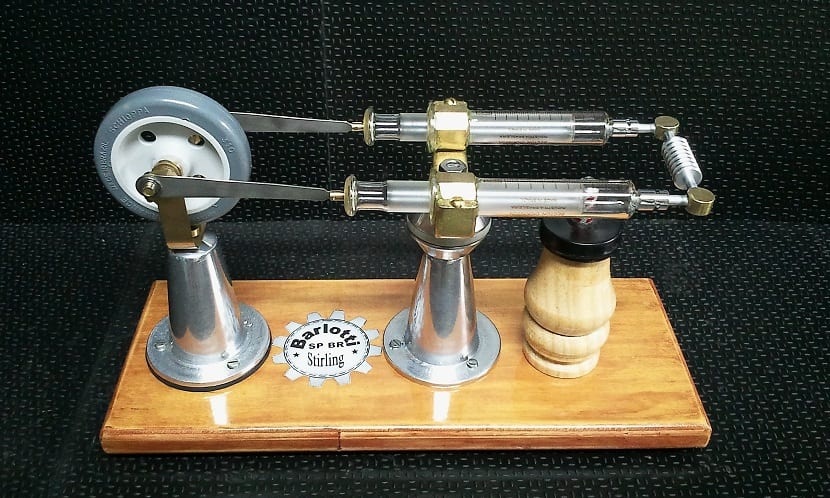
Today we are going to talk about a type of engine different from the one conventionally used for internal combustion. The vehicles employ this type of engine powered by the Fossil fuels whose efficiency is not too good. In this case, we present you the Stirling engine. It is a technical engine with greater efficiency than a gasoline or diesel engine. In this way, it can be said that it is one of the best engines that exist and, in addition, it is ecological.
In this article we are going to analyze the characteristics of the Stirling engine and compare the advantages with the disadvantages of its use. Do you want to know more about this type of engine? You just have to keep reading 🙂
The Stirling engine
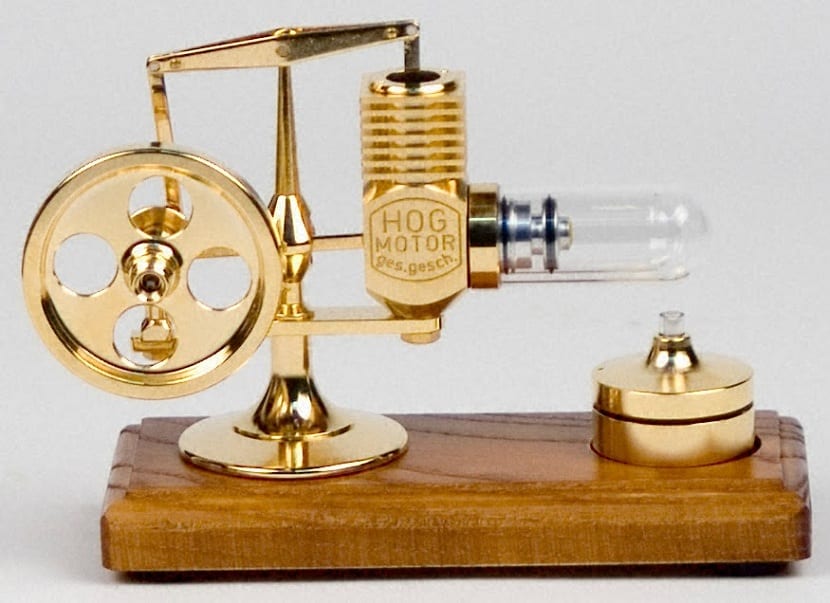
This engine is nothing modern or revolutionary. It was invented in the year 1816 by Robert Stirling. It is known to be an engine with the potential to be more efficient than any other type of combustion. Regardless of their discovery, we cannot say that they have ended up imposing our lives.
In fact, this engine, despite having more potential, is only used in some very specialized applications. The areas where it is used require the engine to be as quiet as possible, unlike conventional internal combustion engines. For example, it is used in submarines or auxiliary power generators for yachts.
It is not being used massively yet, but it does not mean that it is not being worked on. This engine has great advantages that we will analyze later.
Operation
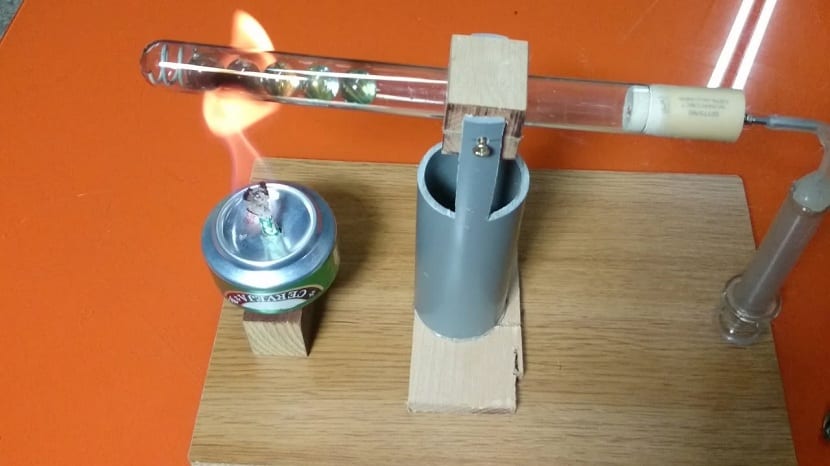
The engine uses a Stirling cycle, which is different from the cycles used in internal combustion engines.
The gases that are used never get out of the engine, which helps to reduce polluting gas emissions. It does not have exhaust valves to vent high pressure gases, as with the gasoline or diesel engine. In the event that there is any danger, it has no risk of explosions. Because of this, Stirling engines are very quiet.
The Stirling engine uses an external heat source that can be combustible. Both from gasoline to solar energy or even the heat produced by decaying plants. This means that there is no type of combustion inside the engine.
The principle by which the Stirling engine works is that a fixed amount of gas is sealed inside the engine. This causes a series of events to form that changes the gas pressure inside the engine and causes it to run.
There are several properties of gases that are critical for the engine to function properly:
- If you have a fixed amount of gas in a fixed volume of space and you increase the temperature of that gas, the pressure will increase.
- If you have a fixed amount of gas and compress it (decrease the volume of your space), the temperature of that gas will increase.
This is how the Stirling engine uses two cylinders. One of them is heated by an external heat source (fire) and the other is cooled by a cooling source (such as ice). The gas chambers that both cylinders have are connected and the pistons are mechanically connected to each other by a link that determines how they will move relative to each other.
Motor parts
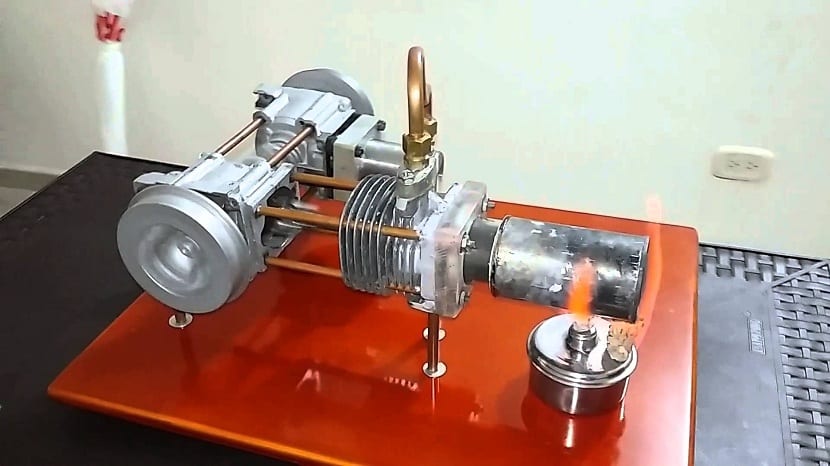
This engine has four parts to its operating or combustion cycle. The two pistons that we have mentioned before are the ones that fulfill all the parts of the cycle:
- To begin with, heat is added to the gas inside the heated cylinder. This creates pressure and forces the piston to move downward. This is the part of the Stirling cycle that does the work.
- Then the left piston moves up while the right piston moves down. These movements move the hot gas towards the cylinder that is cooled by ice. Cooling it quickly lowers the gas pressure and can be compressed easier for the next part of the cycle.
- The piston begins to compress the cooled gas and the heat generated by that compression it is removed by the cooling source.
- The right piston moves up while the left one moves down. This again causes the gas to enter the heated cylinder where it heats up rapidly, building pressure, and the cycle repeats again.
Advantages of the Stirling engine
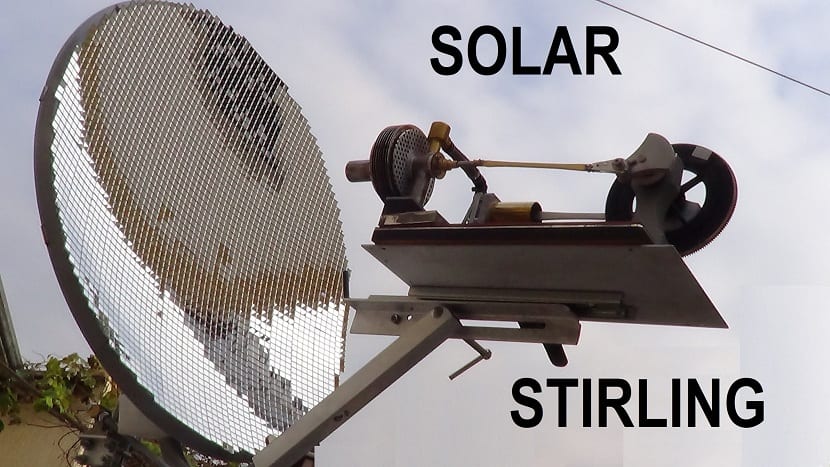
Thanks to this type of operation and its performance, we can find some advantages.
- It is silent. For some activities where more silence is required, this type of motor is a good option. It is also easy to balance and generates little vibration.
- It has high efficiency. Due to the temperatures of the hot and cold sources, the engine can be made to run at cogeneration.
- You can have several hot sources. To heat the gas you can have heat sources such as wood, sawdust, solar or geothermal energy, waste, etc.
- It is more ecological. This type of engine does not contribute to gas emissions into the atmosphere by achieving complete combustion.
- More reliability and easier maintenance. Its technology is very simple but effective. This makes them highly reliable and requires little maintenance.
- They last longer. Unlike conventional engines, being simpler and thanks to their design they last longer.
- Various uses. It can have several uses due to its autonomy and adaptability to the needs and different types of heat sources.
Drawbacks
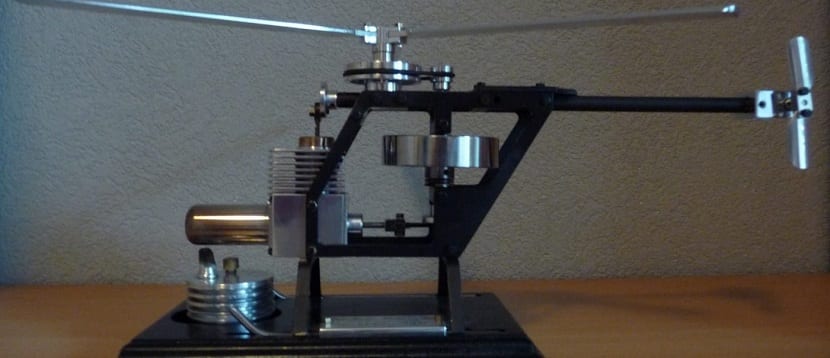
Just as this type of motor offers advantages, it is also necessary to analyze the disadvantages that are:
- Cost is your biggest issue. It is not competitive with other media.
- Not known to the general public. If you don't know what a Stirling engine is, you can't promote it.
- They tend to have sealing problems. This is a complication. The ideal choice would be hydrogen for its lightness and ability to absorb calories. However, it does not have the ability to spread through the materials.
- Sometimes it needs to be very big and requires bulky appliances.
- Lack of flexibility. Quick and effective power variations are difficult to obtain with a Stirling engine. This one is more qualified to operate with a constant nominal performance.
With this information you will be able to better understand this type of engine and analyze it completely.